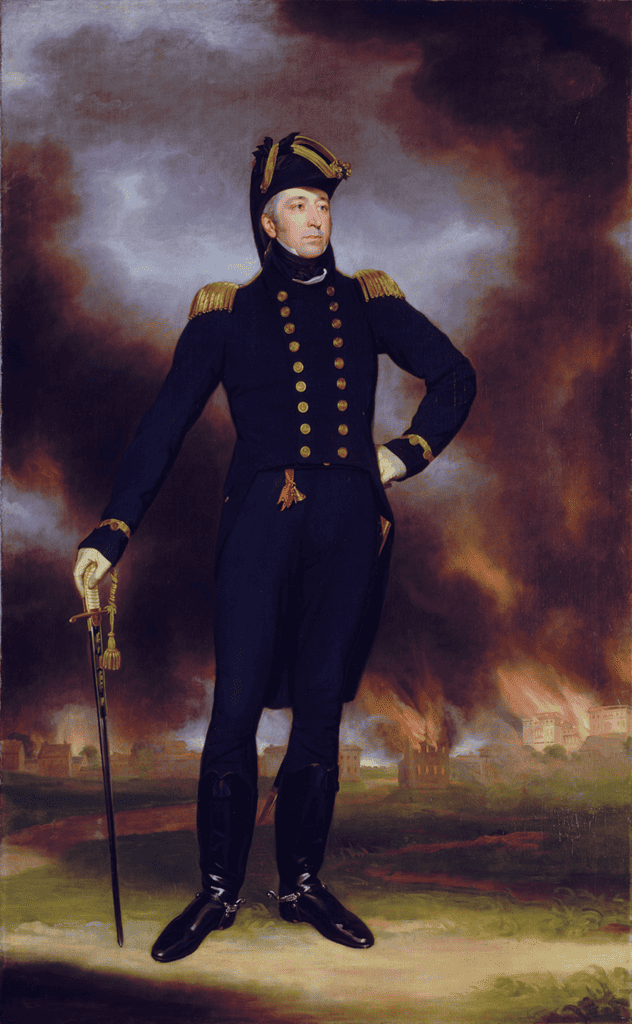An Occupied Town: St. Marys In the War of 1812
If we lived in St. Marys on this date 209 years ago, we would be captives in our own city. In January of 1815 during the War of 1812, the British occupied St. Marys, wreaking havoc on the city and its inhabitants. Discover the details of this invasion below.
Early in January 1815, Camden County residents sent a letter to the Georgia governor appealing for military protection due to their exposed position near Spanish Florida and the Atlantic Ocean. However, the British arrived before any help could. A detachment of only 96 men was on duty to defend Fort Point Peter north of St. Marys when 1,500 British troops under command of Admiral Cockburn sailed into Cumberland Sound.

On January 10, the British invaded Cumberland Island – meeting with no opposition – and made Dungeness Mansion their headquarters. They banished Louisa Greene Shaw, daughter of the late Catharine Greene Miller, and her family and guests to the upper floors. Taking over Cumberland was the first step in their plan to blockade American transportation on the Intracoastal Waterway (part of which was the Cumberland Sound). They then set their sights on Fort Point Peter, the first landing site on the Georgia side of the St. Marys River.

Captain Massias, who commanded Point Peter’s troops, had notified Cockburn on his arrival that the peace treaty between the United States and England had been ratified two weeks before. However, Cockburn replied he had not received an official account of the ratification and moved forward with his plans.
On January 13, the British bombarded Fort Point Peter, where only 36 men were left to defend it. Of those 36 men, 14 were soon casualties, and the rest soon abandoned the fort. Simultaneously, Captain Massias was moving the rest of the American troops across land toward Kings Bay. They formed a line at what is still known as Battle Hammock, but the vastly outnumbered Americans soon withdrew north to the Altamaha River. The British reported only three men killed and five wounded in their entire expedition.
The British then burned the barracks at Point Peter and occupied St. Marys on January 15. Although they argued they plundered only public property, American reports suggest the British looted the town’s jewelry store and stole fine china and other goods from residents. One Englishman boasted in a letter, “We had some fun at St. Marys and had plenty of plunder. How are you off for tables and chests of drawers, etc.?” Another British soldier reported he and his compatriots took property worth 50,000 pounds. On January 23, the British ended their occupation of St. Marys and withdrew to Cumberland Island, burning what remained of Fort Point Peter en route. They had seized as much as $500,000’s worth of spoils.
In late February, Cockburn received news of the war’s end through a late December newspaper but refused to acknowledge it until he received official word. In the meantime, he declared that Cumberland was an occupied territory and all slaves who reached it would become free under British law, as Great Britain “knows no slavery.” His plan was to destroy income-producing plantations while building the British military by enlisting freed slaves. In all, the British freed 1485 slaves, shipping many to Bermuda, Nova Scotia, or Halifax, where their descendants still live today.
Finally on March 1, Cockburn received official word of the Treaty of Ghent ending the War of 1812, and by March 13, he had evacuated all his soldiers and sailed away. It has been mentioned that the invasion at St. Marys was the last land action of the war, but the February Battle of Fort Bowyer near Mobile actually holds that distinction.

Although the Treaty of Ghent settled none of the issues that began the war and American and British relations returned to pre-war levels, the United States considered their preventing the British from conquering their territory a huge victory. Locals of St. Marys, too, showed their mettle and resilience as they overcame the disaster of the British invasion to become a prosperous port town once again.
Learn more about local action during the War of 1812 on our St. Marys Murder, Mayhem, and Martinis Walking Tour and our Fugitives, Fighters, and Fudge: St. Marys Walking Tour!


